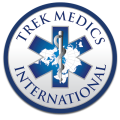AT-A-GLANCE
DIAL 112 TO CALL AN AMBULANCE IN POLAND
- Since 2002, Poland has made great efforts to ensure a national emergency response system that can meet international standards for prehospital emergency care
- Previous emergency numbers in Poland have also been preserved:
- DIAL 999 for ambulance
- DIAL 998 for fire department
- DIAL 997 for police
HOW CAN I CALL AN AMBULANCE IN POLAND?
Dial 112 for an ambulance in Poland
- You can also try the traditional numbers of 999 and 998
Yes, mostly. Emergency dispatch centers are run by SECAFS, which had a total of 155 centers nationwide in 2004 (Hdalik). Dispatchers must complete a professional training course prior to working in a call center.
“Emergency numbers 997 (Police), 998 (State Fire Service) and 999 (emergency medical services) are working alongside “112” in Poland since Polish citizens are accustomed to using those numbers, to ensure their comfort and due to specificity of some emergency calls.” [Source: www.112.gov.pl/en/]
Additional emergency services provided through SECAFS include
- Marine Search and Rescue
- Mining Rescue Service
- Police
- Border Guard
- Volunteer Mountain Search and Rescue
- Volunteer Water Rescue Service
- Polish Red Cross
Yes. “Since 2002, undergraduate courses have been run for paramedics in medical universities and colleges” (Hladki, 215) providing training in:
- Basic Life Support (BLS) and Automatic External Defibrillator (AED)
- Intermediate Life Support (ILS), Advanced Life Support (ALS), Pediatric Advanced Life Support (PALS), Basic and Advanced Trauma Life Support (B/ATLS)
Prehospital emergency care providers include doctors, nurses and paramedics; “Currently all fire-fighters are licensed paramedics” (Hladki, 214)
Ground Ambulance in Poland
Ambulance types are distinguished by letters painted on vehicle body. “Generally, ambulances are stationed in ambulance bases collocated with hospital emergency departments, in ambulance stations outside hospitals and in fire-fighting units” (Hladki, 216)
- “R” – Resuscitation Ambulance
- Used for life-threatening conditions
- Staffed by:
- Emergency physician, anesthesiologist or internist in specialty emergency medicine training, paramedic and emergency nurse OR
- Two Paramedics and an ambulance driver
- “W” – Accident Ambulance
- Also called “primary ambulance”
- Dispatched where Resuscitation ambulances are not necessary or otherwise unavailable
- Staffed by:
- Emergency nurse/paramedic (who are specifically licensed for rescue interventions)
- Team may / may not include a physician on board
- Equipment on “R” and “W” ambulances are “nearly identical” (Hladki, 216)
- “P” – Transport Ambulance
- Transports patients not requiring prehospital interventions or blood transfusions
- Staffed by:
- Paramedic and driver (since 2007, without doctor)
- “N” – Neonatal Ambulance
- Transports neonates and infants
Additional motorcycle response vehicles staffed by paramedics are also available in some cities.
Air Ambulance in Poland
Helicopter Emergency Medical Services (HEMS) are operated and managed separately from the EMS branch and are subordinate to Minister of Health
- 16 permanent bases & 2 seasonal
- 18 Mi-2puls helicopters (rescue)
From 1999 to 2002, the Polish government oversaw the establishment of the “Integrated Emergency Care” program which included the building of 278 emergency departments nationwide (1 emergency department per 150,000 inhabitants) and 16 pediatric emergency departments.
ADDITIONAL INFO
COMMON EMERGENCIES IN POLAND
RECOMMENDED VACCINATIONS FOR POLAND
According to the US Centers for Disease Control and Prevention (CDC), different groups of travelers will require different vaccinations for travel in Poland:
- All Travelers:
- Measles-mumps-rubella (MMR) vaccine
- Diphtheria-tetanus-pertussis vaccine
- Varicella (chickenpox) vaccine
- Polio vaccine
- Your yearly flu shot
- Most Travelers:
- Hepatitis A
- Some Travelers:
- Hepatitis B
- Rabies
Read more about travel in Poland at the CDC website: https://wwwnc.cdc.gov/travel/destinations/traveler/none/poland (Last accessed: Aug. 7, 2017)
1891 – Krakow municipal ambulance service founded — “one of the oldest civil municipal ambulance stations in the world (the third after Vienna and Budapest)” (Hladki, 216)
- “A first responder service based on ambulance teams, Helicopter Emergency Medical Services and emergency departments has been functioning since the end of World War II in co-operation with the State Fire-fighting service” (Hladki, 214)
- Poland has an inordinate number of research articles from their prehospital emergency care system dating back to the 1970s — well beyond the amount of research published by most developed EMS systems before the 200s
1995 – State Emergency Care and Fire Fighting System (SECAFS)
- Created in 1995 to standardize rescue functions formerly carried out by State Fire Department
- Coordinates rescue functions at catastrophes and natural disasters (in cooperation with other emergency management agencies and responders)
1999 – Formation of “uniform, integrated and modern Polish emergency medical care system … to improve the rescue service under SECAFS guidelines” (Hdalki, 215)
- Main priorities:
- Improvement of emergency patient transport
- Decrease in deaths during prehospital care
- Reducing transport times
1999-2002 – Government implements “Integrated Emergency Care” initiative with goal of ensuring response times within 9mins (urban) or 15mins (rural) in at least 50% of cases.
- Required total of 1,140 ambulances for entire country
- Creation of 130 dispatch centers
- Building of 278 emergency departments (1 emergency department per 150,000 inhabitants) and 16 pediatric emergency departments
2002 – Motorcycles are first used as official response vehicles in Gdansk (Danzig) [Source: JEMS.com]
- Hladki W, Andres J, Trybus M, Drwila R: “Emergency medicine in Poland.” Resuscitation 2007;75(2):213-218.
- Sagan A et al: “The 2015 emergency care reform in Poland: Some improvements, some unmet demands and some looming conflicts.” Health Policy. 2016;120(11):1220-5.
SCOREBOARD
% of Seriously Injured Transported by Ambulance
[Source: 2013 Global Status Report on Road Safety, WHO]
ROAD TRAFFIC INJURY DEATHS
(PER 100,000 POPULATION)
[Source: 2015 Global Status Report on Road Safety, WHO]
REPORTED HOMICIDES
(PER 100,000 POPULATION)
[Source: 2014 Global Status Report on Violence Prevention, WHO-UNDP]
OFFICIAL TWITTER FEEDS
To read translated versions of Tweets in foreign languages, click on the feed to open it in the Twitter mobile app or webpage.
MAGEN DAVID ADOM ISRAEL
PALESTINIAN RED CRESCENT SOCIETY




